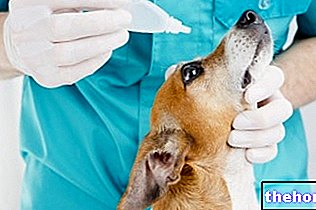Cyto-histological examination
It is a fairly rapid examination and can also be performed - where possible - in the veterinary clinic. The technique consists in taking a sample of tissue or cells from a skin lesion or from an organ in which parasites are likely to be found (lymph nodes, spleen , bone marrow, blood) .The material to be analyzed is obtained by means of a withdrawal with "needle aspiration" or with biopsy sections (of tissues or lesions) which allow to highlight, after coloring, the presence of parasites in the sample.
ELISA exam
Test that has taken hold in recent years thus becoming, probably, the best known and used. This method is easy to use and quick to respond, with fairly low costs. It allows to evaluate the presence of the leishmaniasis parasite as it detects, through colorimetric reactions, the existence of antibodies against the antigens of Leishmania in the sample taken (usually blood).
Indirect immunofluorescence test
The test is performed on the sample taken (serum), which is made to react with antigens (molecules) of the Leishmania. If the animal serum contains antibodies to Leishmania, these bind to the parasite's antigens. The reaction is highlighted using "anti-antibodies" labeled with a fluorescent compound that will bind to the antibody-antigen complex Leishmania. All this is highlighted with a particular microscope that allows to identify the fluorescent compound (positive reaction index).
PCR
The technique of Polymerase Chain Reaction, discovered at the end of the 1980s by Kary Mullis, is now used enormously in the medical field. This allows to amplify the nucleotide sequences of the DNA of different microorganisms, thus giving the possibility to identify them even if they are present in minimal quantities. It is extremely valid in when it has a very high sensitivity (it allows to identify as positive the very large part of the sick subjects).
that can be used:
- Meglumine antimoniate administered subcutaneously;
- Miltefosine by mouth;
- Allopurinol by mouth;
- Domperidone by mouth.
The therapeutic approach of the dog with leishmaniasis is not simple and can have a variable duration (in any case, always a few months); moreover, often, depending on the animal's state of health, supportive treatment may be necessary to correct pathologies that they may arise or are already present.
The dog can recover from clinical manifestations, but will still remain infected throughout his life, therefore, he will need regular checkups.
. These products prevent - even if none with an absolute guarantee of effectiveness - that the dog is stung by the phlebotomist who can potentially carry the Leishmania.
Furthermore, since the sand flies are active during the hot season and especially in the twilight hours, it is advisable to limit the exits during these "critical" times.
. Currently (March 2021), two types of leishmaniasis vaccines are available in Italy with the trade names CaniLeish® and Letifend®.The vaccine is recommended for asymptomatic and "leishmaniasis negative" dogs following appropriate screening.
For more information on the diagnosis, treatment and prevention of leishmaniasis, ask your veterinarian for advice.
For further information: Leishmaniasis: How it manifests itself, transmission, cure



.jpg)























